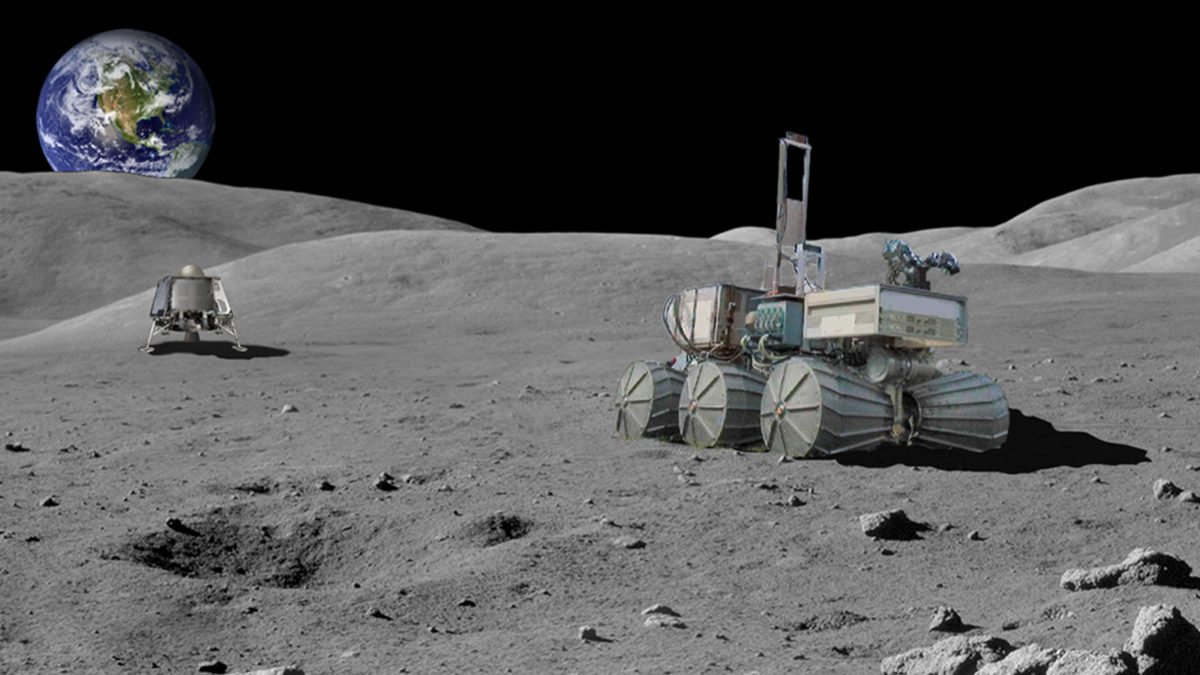NASA plans to pay companies to extract tablespoons of lunar regolith
By Cat Hofacker|September 10, 2020
Aim is to create norms for future mining of the moon
The last samples of lunar dust and rocks were collected in 1972 by NASA astronauts. The next samples could be collected by one or more companies funded by NASA.
NASA is challenging U.S. and non-U.S. companies to tell it how they would collect between 50 and 500 grams of lunar regolith (three tablespoons to 2.5 cups) and what that would cost. A robotic spacecraft or astronauts would scoop up the dirt and rocks for return to Earth at a date to be determined. This would be the first step toward what NASA envisions as a bustling lunar economy in which companies harvest rare Earth minerals or collect water ice to be converted into rocket fuel, among other applications.
“Bottom line is we’re going to buy some lunar soil for the purpose of demonstrating that it can be done,” NASA Administrator Jim Bridenstine said during a keynote at the virtual Summit for Space Sustainability, given shortly after NASA issued a blog post and posted the solicitation on a procurement website.
Companies have until Oct. 9 to submit plans for how and when the regolith would be collected. The solicitation specifies only a general timeline and payment structure: The company or companies selected must collect the regolith by 2024 and provide NASA with photos of the regolith and directions for where to find the piles on the lunar surface.
NASA will pay between $15,000 and $25,000 for the regolith, Bridenstine said, with the company or companies receiving 10% of the funds when NASA awards the contract, 10% once the spacecraft is launched and the remaining 80% once the material is turned over to NASA.
Because the funds would not cover the enormous cost of building, launching and landing a spacecraft, Bridenstine said he expects the companies already planning lunar missions to be the foremost bidders. Under the Commercial Lunar Payload Services program, or CLPS, NASA has hired a series of companies to build small robotic landers to ferry science experiments and cargo to the moon. The first of those missions is scheduled for launch in 2021.
Once the contract winner or winners mines the regolith, NASA will bring the cache back to Earth “in the future,” Bridenstine said, without providing a more specific date.
The amount of regolith to be collected would be relatively small, Bridenstine said, because a larger goal of the mission is to establish a “normalization process” for how private companies will extract resources within the limits of the Outer Space Treaty. The 1967 international agreement says that the moon and other celestial bodies are not “subject to national appropriation by claim of sovereignty.”
“That’s absolutely not what we intend to do here,” Bridenstine said in his remarks. The U.S. interprets the Outer Space Treaty as allowing countries and companies to mine the moon without claiming sovereignty. Bridenstine compared the approach to commercial fishing in international waters: “You do not own the ocean,” he said, but “you own the tuna” you catch.
He said he expects each contract to be the first in a series awarded by NASA to harvest lunar resources. In this and future missions, contractors would be free to collect more than the amount specified by NASA and sell it to other companies, countries or private individuals.
“This is a trail that needs to be blazed,” he said, “and I think the United States of America needs to lead here.”





